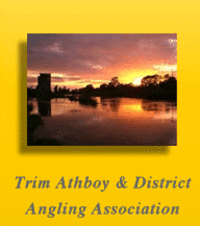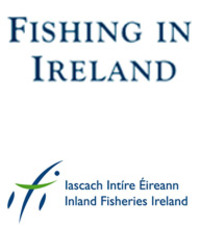


Local Sponsors
-
Trim Athboy & District Angling Association.
Oakstown, Trim, Co. Meath
Our fishery, which includes the Trimblestown river, runs on the Boyne from Scarriff Bridge down past Trim as far as Rathnally, where it joins up with the Bective waters.
-
An angler's guide to the best fishing in Ireland.
Inland Fisheries Ireland. Swords Business Campus Swords Co. Dublin.
Ireland is recognised as being the outstanding fishing holiday destination in Europe. The vast variety and quality of fishing in Ireland makes it the perfect destination for your angling holiday. Please have a look at our guide on our website.
More information
The Trim Athboy & District Angling Association for capitally funding the webcam's installation. The River Boyne, known as An Bhóinn or Abhainn na Bóinne in Irish, is a river situated in Leinster, Ireland, with a total length of approximately 112 kilometers (70 mi). It originates at Trinity Well, Newberry Hall, near Carbury in County Kildare, and flows in a northeasterly direction through County Meath until it reaches the Irish Sea between Mornington in County Meath and Baltray in County Louth. This river has been recognized since ancient times, as evidenced by the Greek geographer Ptolemy who included the Boyne in his map of Ireland during the 2nd century. Ptolemy referred to it as Βουουίνδα (Bouwinda) or Βουβίνδα (Boubinda), which in Celtic translates to "white cow" (Irish: bó fhionn). During the High Middle Ages, it was referred to as the Boandus by Giraldus Cambrensis. In Irish mythology, it is believed that the river was created by the goddess Boann, and the name Boyne is an anglicized form of her name. Furthermore, legends associate the river with significant events, such as Fionn mac Cumhail capturing Fiontán, the Salmon of Knowledge, within its waters. The section of the Boyne in Meath was also known as Smior Fionn Feidhlimthe (the 'marrow of Fionn Feilim').The tidal estuary of the Boyne, extending inland up to its confluence with the Mattock River, has been referenced by various names in Irish literature and is associated with departures and arrivals in ancient legends and myths, including The Tragedy of the Sons of Tuireann and Togail Bruidne Dá Derga. In the Acallam na Senórach, the estuary is referred to as Inber Bic Loingsigh, known for its abundance of ships. Inber Colpa or Inber Colptha was the principal name for the mouth of the Boyne during the early medieval period. The townlands and civil parish of Colp, or Colpe, located along the southern shore, still preserve this name. Colpa of the Sword, a son of Míl Espáine in Irish mythology, is associated with this area. According to tradition, Colpa drowned while attempting to land there and is said to be buried in the ringfort behind Colpe church. An alternative Dindsenchas tradition connects the name to the Máta, a massive aquatic creature, whose dismembered remains were thrown into the Boyne after being killed at Brú na Bóinne. The shinbone (colptha) of the Máta reached the estuary, giving rise to the name Inber Colptha.Despite its relatively short length, the Boyne carries considerable historical, archaeological, and mythical significance. The Battle of the Boyne, a pivotal event in Irish history, occurred along the river near Drogheda in 1690 during the Williamite War in Ireland. The Boyne passes through notable locations such as the ancient town of Trim, Trim Castle, the Hill of Tara (the former capital of the High King of Ireland), Navan, the Hill of Slane, Brú na Bóinne (a complex of megalithic monuments), Mellifont Abbey, and the medieval town of Drogheda. Additionally, the Boyne Valley is home to various other historical and archaeological sites, including Loughcrew, Kells, Celtic crosses, and castles.


